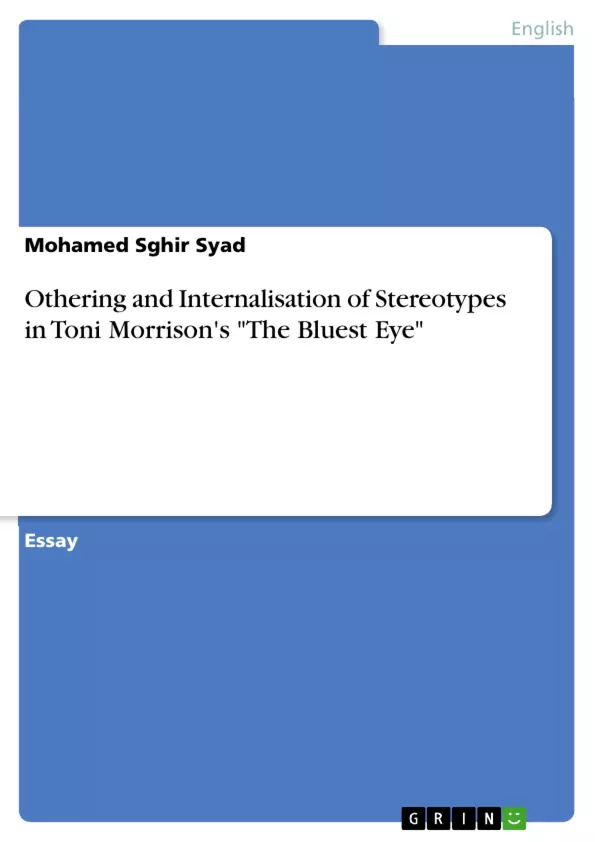Racism and sexism are endemic to the stereotypical “othering” enterprise that brackets black female subjectivity in a forced homogeneity. Doubly stereotyped as the racial and sexual “other”, black women risk being forced to signify the negative counterpart in a binary system of cultural and political representation.
Usually white and male, the defining subject associates negatively inflected traits with the defined “other” — in this context a black female — while reserving positive attributes for its own definition and identification. In recasting black women’s subjectivity in fiction, Morrison admits the existence of racial and sexual stereotypes.
From her first published novel, "The Bluest Eye", Morrison challenges and deconstructs the double plight of black women in the U.S. by exposing, first, the processes involved in racial and gendered “othering” and, second, the consequent internalised effects that transmute into “self-othering.”
Inhaltsverzeichnis (Table of Contents)
- “Othering” and Internalisation of Stereotypes in Toni Morrison's The Bluest Eye
- The Process of “Othering”
- The Reception of Baby Dolls
- The Doll Experiment
- The Culture of Whiteness
Zielsetzung und Themenschwerpunkte (Objectives and Key Themes)
This essay examines the concept of “othering” and the internalization of stereotypes in Toni Morrison's novel The Bluest Eye. It explores how racial and sexual stereotypes are used to marginalize black women and how these stereotypes can lead to self-hatred and internalized oppression.
- The role of “othering” in shaping racial and sexual identities
- The internalization of stereotypes and its impact on self-perception
- The use of dolls as cultural artifacts that reinforce racial and gender norms
- The historical and contemporary significance of the Clark doll experiment
- The influence of consumer culture on the perpetuation of stereotypes
Zusammenfassung der Kapitel (Chapter Summaries)
- “Othering” and Internalisation of Stereotypes in Toni Morrison's The Bluest Eye: This chapter introduces the concept of “othering” and its relationship to the internalization of stereotypes. It discusses how black women are doubly stereotyped as the racial and sexual “other” and how this marginalization is perpetuated by dominant cultural narratives.
- The Process of “Othering”: This chapter delves into the process of “othering” and its connection to Frantz Fanon's psychoanalytic theory of the colonial subject. It explains how the concept of the “other” is constructed through a dialectic of self/other and how this process can lead to the objectification and exclusion of marginalized groups.
- The Reception of Baby Dolls: This chapter examines the role of baby dolls in shaping children's perceptions of race and gender. It explores how the preference for white dolls over black dolls can be interpreted as a reflection of internalized stereotypes and a lack of positive self-image.
- The Doll Experiment: This chapter discusses the famous Clark doll experiment and its impact on understanding racial perception and attitudes in African American children. It analyzes the experiment's findings and the subsequent critiques of its methodology and interpretation.
- The Culture of Whiteness: This chapter explores the influence of the culture of whiteness on the perpetuation of stereotypes and the preference for white dolls. It examines how the commercialization of toys and consumer culture contribute to the reinforcement of racial and gender norms.
Schlüsselwörter (Keywords)
Key terms and concepts explored in this essay include “othering,” internalization of stereotypes, racial and sexual stereotypes, black female subjectivity, cultural representation, colonial subject, racial consciousness, Clark doll experiment, consumer culture, and the influence of whiteness.
- Quote paper
- Mohamed Sghir Syad (Author), 2013, Othering and Internalisation of Stereotypes in Toni Morrison's "The Bluest Eye", Munich, GRIN Verlag, https://www.grin.com/document/322566



